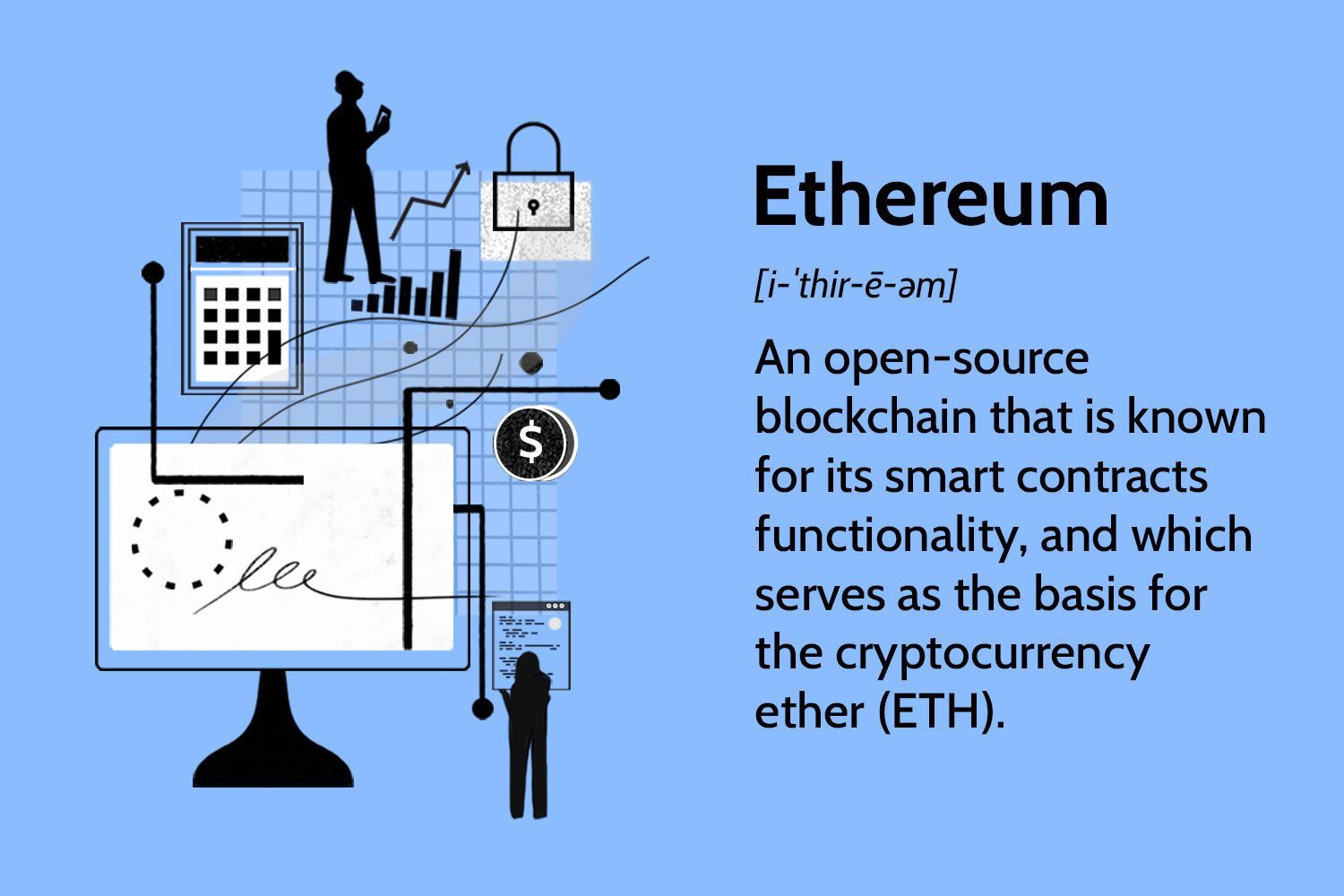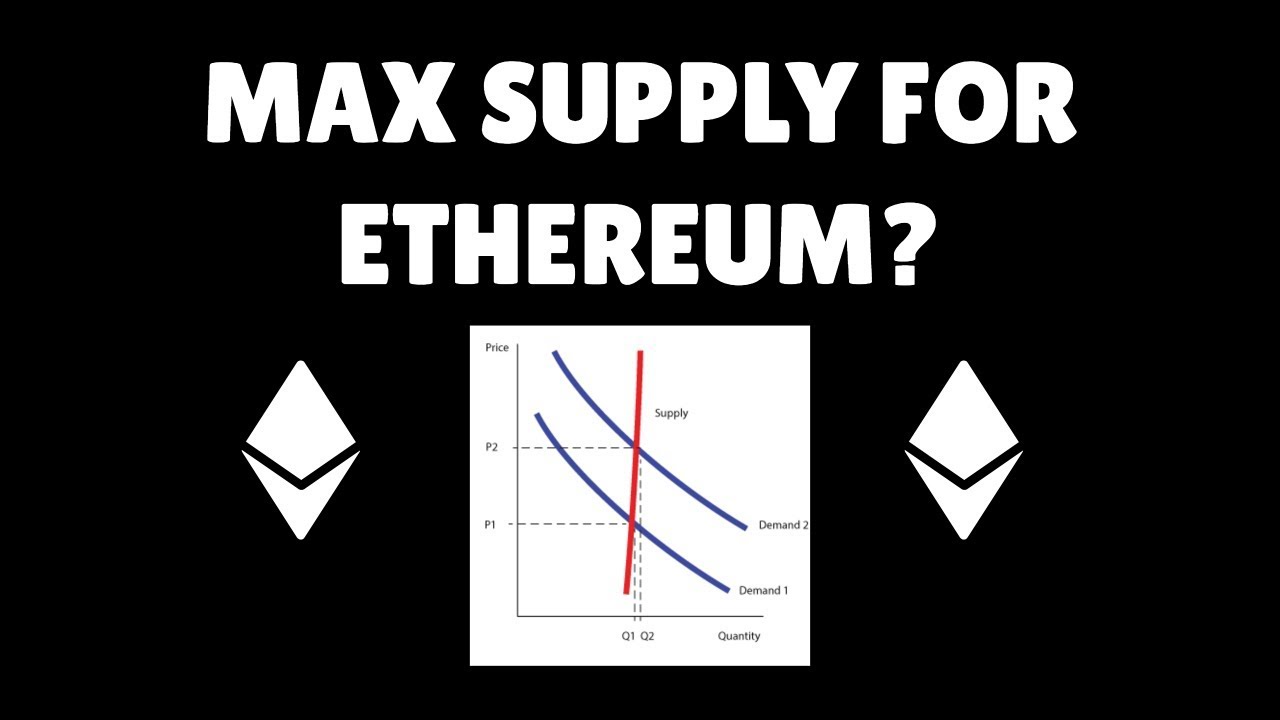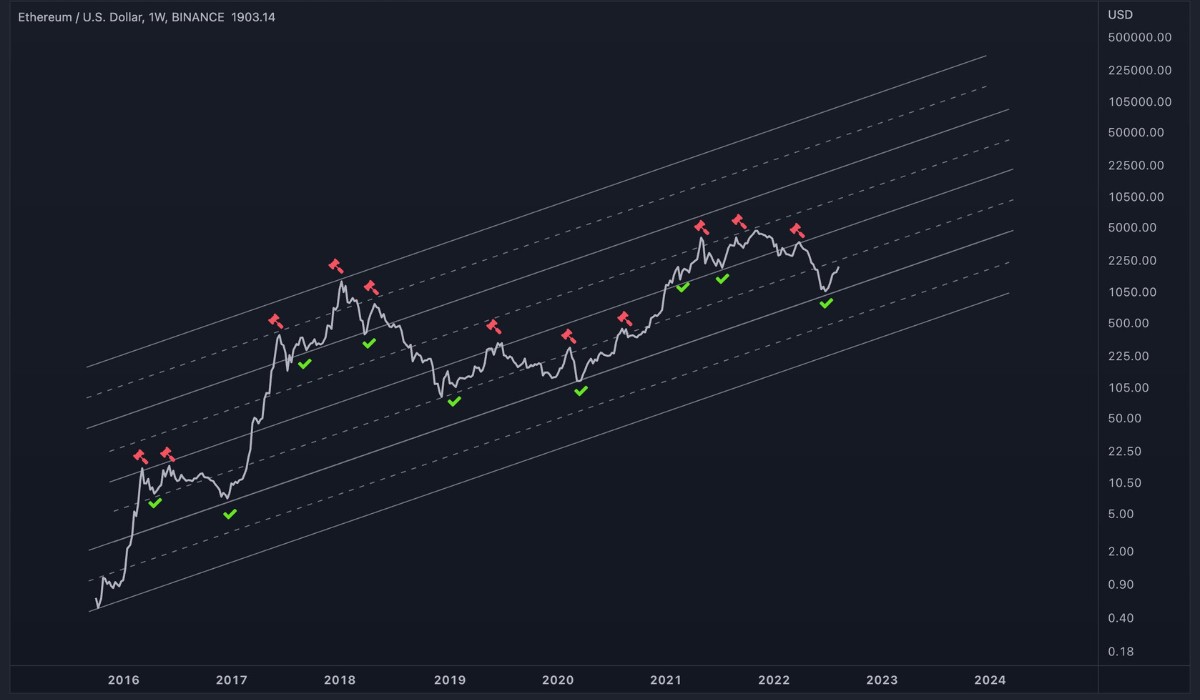Introduction
The rise of blockchain technology over the past decade has revolutionized the way we think about digital transactions and decentralized systems. While Bitcoin was the first and most well-known cryptocurrency to utilize blockchain technology, it is Ethereum that has emerged as a powerful platform for developing decentralized applications (DApps) and smart contracts.
Ethereum, created by Vitalik Buterin in 2015, is an open-source blockchain platform that enables developers to build and deploy smart contracts on a decentralized network. Its native cryptocurrency, Ether (ETH), powers the platform and allows for the execution of these smart contracts. Unlike traditional centralized systems, Ethereum provides a secure and transparent environment for executing digital agreements without the need for intermediaries.
The primary goal of Ethereum is to decentralize the internet and empower individuals with ownership and control over their digital assets. Its underlying blockchain technology ensures immutability and trust through distributed consensus, making it resistant to censorship, fraud, and downtime. This has unlocked a world of possibilities for various industries, including finance, supply chain management, healthcare, and more.
In this article, we will explore the fundamental aspects of Ethereum, including its unique features, the concept of smart contracts, its virtual machine, programming languages, use cases, as well as the challenges and limitations it faces.
Whether you are a developer looking to build decentralized applications, an investor considering the potential of Ethereum, or simply someone curious about blockchain technology, this article will serve as a comprehensive guide to understanding what Ethereum is and what it can do.
Background on Ethereum
To understand Ethereum, we need to look back at the origins of blockchain technology. The concept of blockchain was introduced in 2008 by an anonymous person or group known as Satoshi Nakamoto when they published the Bitcoin whitepaper. Bitcoin was the first successful implementation of blockchain technology, serving as a decentralized, peer-to-peer digital currency.
While Bitcoin revolutionized digital currency, it was limited in terms of functionality. Vitalik Buterin, a programmer and cryptocurrency researcher, recognized this limitation and proposed the idea of Ethereum in late 2013. The Ethereum project aimed to go beyond Bitcoin’s capabilities by allowing developers to build decentralized applications on the blockchain.
Ethereum was officially launched in 2015, ushering in a new era of blockchain innovation. It introduced the concept of smart contracts, which are self-executing digital agreements that automatically enforce the terms and conditions encoded within them. Smart contracts eliminate the need for intermediaries, such as lawyers or banks, and enable direct, transparent, and irreversible transactions.
One of the key differentiators of Ethereum from Bitcoin is its use of a Turing-complete programming language. This allows developers to write complex applications with conditional statements, loops, and variables. Ethereum’s flexibility and expressive power have made it a popular platform for creating decentralized applications across various industries.
Since its inception, Ethereum has undergone several major updates to improve performance, scalability, and security. The most significant update, known as Ethereum 2.0 or ETH 2.0, is currently underway and aims to transition the network from a proof-of-work (PoW) consensus mechanism to a proof-of-stake (PoS) consensus mechanism. This transition will address scalability issues and reduce energy consumption.
Ethereum has gained significant recognition and adoption within the blockchain community, attracting developers, businesses, and investors from around the world. Its native cryptocurrency, Ether (ETH), has become one of the largest cryptocurrencies by market capitalization.
In the next sections of this article, we will delve deeper into the key features of Ethereum, the concept of smart contracts, the Ethereum Virtual Machine (EVM), programming languages and tools used in Ethereum development, various use cases of Ethereum, as well as the challenges and limitations faced by the platform.
What is a Smart Contract?
A smart contract is a self-executing and digitally enforceable agreement that is built on top of the Ethereum blockchain. Unlike traditional contracts, which usually involve legal documents and intermediaries for enforcement, smart contracts are encoded with predefined rules and conditions that automatically execute once those conditions are met.
Smart contracts are created using Ethereum’s programming language, Solidity. These contracts are stored on the Ethereum blockchain, ensuring transparency, immutability, and security. The decentralized nature of the blockchain ensures that no single party can tamper with or modify the contract once it is deployed.
Smart contracts enable a wide range of applications, from financial transactions to supply chain management and decentralized governance. For instance, in a financial transaction, a smart contract can be programmed to release funds to a seller only after the buyer receives the product or service. The terms and conditions of the agreement are encoded within the contract, eliminating the need for trust between parties.
One of the key benefits of smart contracts is their ability to automate processes and eliminate the need for intermediaries. This reduces costs, speeds up transactions, and minimizes the risk of fraud. Additionally, the transparency of the Ethereum blockchain ensures that all parties involved can verify the execution of the contract.
Smart contracts have opened up new possibilities for decentralized applications (DApps) that operate on the Ethereum platform. These DApps leverage the power of smart contracts to create innovative solutions across various industries. For example, decentralized finance (DeFi) applications enable users to lend, borrow, and trade digital assets directly without the need for traditional financial intermediaries.
It’s important to note that while smart contracts provide a high level of automation and efficiency, they are still subject to the accuracy of the information provided to them. Garbage in, garbage out still applies in the context of smart contracts. Therefore, it is crucial to ensure the accuracy and reliability of data fed into smart contracts to avoid unintended consequences.
In summary, smart contracts are self-executing agreements that operate on the Ethereum blockchain. They automate processes, eliminate intermediaries, and ensure transparency and security. By leveraging smart contracts, developers can create decentralized applications that revolutionize various industries and empower individuals with ownership and control over their digital assets.
Key Features of Ethereum
Ethereum offers several key features that make it a unique and powerful platform for building decentralized applications and executing smart contracts. These features include:
1. Decentralization: Ethereum operates on a decentralized network of nodes spread across the globe. This decentralized architecture ensures that there is no single point of failure or control, making the platform resistant to censorship, fraud, and downtime.
2. Smart Contracts: Ethereum is known for its support of smart contracts, which are self-executing agreements with predefined rules and conditions. Smart contracts enable trustless and automated transactions, eliminating the need for intermediaries and reducing costs.
3. Turing-Complete Programming Language: Ethereum’s programming language, Solidity, is Turing-complete, allowing developers to create complex applications with conditional statements, loops, and variables. This flexibility enables the development of sophisticated decentralized applications across various industries.
4. Ethereum Virtual Machine (EVM): The Ethereum Virtual Machine (EVM) is a runtime environment that executes smart contracts on the Ethereum network. It is a sandboxed environment that ensures the isolation and security of smart contract execution.
5. Interoperability: Ethereum’s open-source nature and standardized protocols allow for easy interoperability with other blockchain networks. This means that assets and data from different blockchains can interact seamlessly with Ethereum, enabling cross-chain transactions and interoperable applications.
6. Ethereum Improvement Proposals (EIPs): EIPs are proposals for changes or additions to the Ethereum protocol. These proposals go through a rigorous review process and, if accepted, can result in significant upgrades and improvements to the Ethereum network.
7. Ethereum Name Service (ENS): The Ethereum Name Service (ENS) is a decentralized domain name system that replaces complex Ethereum addresses with human-readable names. This makes it easier for users to interact with decentralized applications and send transactions using familiar domain names.
8. Gas Fees: Ethereum uses a concept called gas to calculate the cost of performing operations and executing smart contracts. Gas fees are paid by users to incentivize miners and maintain the security and functionality of the network.
These key features of Ethereum have paved the way for a wide range of use cases and applications, from decentralized finance (DeFi) and non-fungible tokens (NFTs) to supply chain management and voting systems. Ethereum continues to evolve and innovate, as developers build new solutions on top of its robust infrastructure.
The Ethereum Virtual Machine (EVM)
The Ethereum Virtual Machine (EVM) is a crucial component of the Ethereum platform. It is a runtime environment that allows for the execution of smart contracts on the Ethereum network.
The EVM is a sandboxed and isolated environment, which means that the code running inside it is secure and cannot access or interfere with the underlying operating system. This ensures that the execution of smart contracts is safe and reliable.
The EVM operates on the principle of Ethereum’s consensus algorithm, which is currently based on proof-of-work (PoW). Miners validate and execute transactions, and smart contracts are run on their respective nodes. The decentralized nature of Ethereum ensures that the EVM is distributed across thousands of nodes globally, making the network highly resilient.
The EVM consists of two main components: the Ethereum Stack and the Ethereum Memory. The Ethereum Stack is a stack-based data structure that stores and manages data during the execution of a smart contract. It operates on a Last-In-First-Out (LIFO) basis, where new data is pushed onto the stack and removed when it is no longer needed.
The Ethereum Memory is a mutable and expandable byte array that smart contracts can use to store and retrieve data during their execution. It provides a temporary storage space for smart contracts to perform calculations and store intermediate results.
The EVM operates on a bytecode instruction set, which is a low-level machine language specifically designed for Ethereum. Smart contracts are compiled into bytecode and deployed on the Ethereum network. When a transaction involving a smart contract is initiated, the EVM interprets the bytecode and executes the corresponding instructions.
Every instruction executed on the EVM consumes a certain amount of gas, which is a unit of computational resource on the Ethereum network. Gas fees are paid by users to cover the costs of executing the smart contract code and incentivize miners to include their transactions in the blockchain. The gas cost of each instruction is determined based on its complexity and the computational resources required.
The EVM provides a secure and deterministic environment for executing smart contracts. It ensures that the same output is obtained for a given input, regardless of the node or miner executing the contract. This deterministic behavior is crucial for ensuring consistency and reliability across the Ethereum network.
In summary, the Ethereum Virtual Machine (EVM) is a runtime environment that executes smart contracts on the Ethereum network. It provides a sandboxed and isolated environment to ensure the security and reliability of smart contract execution. The EVM operates on a bytecode instruction set and consumes gas for each executed instruction. It is a critical component of Ethereum’s decentralized infrastructure.
Programming Language and Tools for Ethereum
Developing applications and smart contracts on the Ethereum platform requires familiarity with Ethereum-specific programming languages and tools. These specialized resources enable developers to harness the full potential of Ethereum and create decentralized applications (DApps) that can be deployed on the blockchain.
Solidity: Solidity is the most widely used programming language for Ethereum development. It is a statically typed, high-level language specifically designed for writing smart contracts. Similar to JavaScript and C++, Solidity allows for the creation of complex and expressive smart contracts with features like inheritance, modifiers, and event-driven programming.
Vyper: Vyper is another programming language for Ethereum smart contracts. Unlike Solidity, Vyper is a more restricted and security-oriented language. It emphasizes simplicity, clarity, and auditability, making it easier to write and review secure smart contracts. Vyper’s design philosophy focuses on reducing potential attack vectors and increasing the trustworthiness of smart contracts.
Truffle: Truffle is a widely used development framework for Ethereum that provides an integrated suite of tools for building, testing, and deploying DApps and smart contracts. Truffle simplifies the development process by offering a standardized project structure, automated smart contract compilation and deployment, and built-in testing capabilities. It also enables developers to interact with their contracts and the Ethereum network through a command-line interface (CLI) or graphical user interface (GUI).
Remix: Remix is an online IDE (Integrated Development Environment) specifically designed for Ethereum smart contract development. It allows developers to write, compile, and deploy smart contracts directly from their web browser. Remix provides a range of features such as syntax highlighting, code completion, and real-time debugging, making it a popular choice for beginners and experienced developers alike.
Ganache: Ganache is a personal Ethereum blockchain for development and testing purposes. It provides a local blockchain environment that developers can use to deploy and interact with smart contracts. Ganache comes with a graphical user interface (GUI) and offers several useful features, including the ability to mine blocks instantly, simulate transactions, and examine contract events and states.
Ethers.js and Web3.js: Ethers.js and Web3.js are JavaScript libraries that allow developers to interact with the Ethereum blockchain and build decentralized applications. They provide a set of APIs for connecting to Ethereum nodes, sending transactions, and querying data from smart contracts. These libraries abstract the complexities of interacting with the blockchain, making it easier to develop applications that interface with the Ethereum network.
These programming languages and tools form the foundation of Ethereum development. They provide developers with the necessary capabilities and resources to build powerful and secure DApps and smart contracts. By leveraging these tools, developers can unlock the potential of blockchain technology and create innovative solutions across various industries.
Use Cases for Ethereum
Ethereum has opened up a world of possibilities for decentralized applications (DApps) and smart contracts, enabling innovative solutions across a wide range of industries. Here are some of the key use cases for Ethereum:
Decentralized Finance (DeFi): Ethereum has become synonymous with DeFi, which aims to transform traditional financial systems by providing open and permissionless access to financial services. DeFi platforms built on Ethereum enable users to lend, borrow, trade, and invest in digital assets without the need for intermediaries. Examples of popular DeFi applications include decentralized exchanges (DEXs), lending platforms, stablecoins, and yield farming platforms.
Supply Chain Management: Ethereum’s transparency and immutability make it ideal for supply chain management applications. By leveraging smart contracts, companies can track and verify the provenance of goods, ensuring transparency and reducing counterfeiting. Ethereum-based supply chain solutions can improve traceability, streamline logistics, and enhance trust between stakeholders.
Decentralized Identity (DID): Ethereum enables the development of decentralized identity solutions that provide users with control over their personal data. DID platforms built on Ethereum enable self-sovereign identity, where individuals can manage and control their identity information without relying on centralized authorities. This can enhance privacy, reduce identity theft, and simplify the authentication process across various services.
Blockchain Gaming: Ethereum has revolutionized the gaming industry by introducing provably fair gameplay and enabling true ownership of in-game assets through non-fungible tokens (NFTs). Ethereum-based gaming platforms allow players to purchase, sell, and trade unique digital items, creating new monetization models and fostering player-driven economies.
Decentralized Organizations (DAOs): Ethereum provides the infrastructure for building decentralized autonomous organizations (DAOs), which are organizations governed by smart contracts and token holders. DAOs enable decentralized decision-making, fund allocation, and community governance. These organizations can be transparent, inclusive, and resilient, with no centralized authority controlling their operations.
Tokenization of Assets: Ethereum allows for the creation of digital representations of real-world assets through tokenization. Assets like real estate, art, and intellectual property can be tokenized, enabling fractional ownership, increased liquidity, and more accessible investment opportunities. These tokens can be traded on decentralized exchanges, providing a new way to invest in traditionally illiquid assets.
These are just a few examples of the many use cases for Ethereum. The platform’s flexibility, programmability, and security have opened the doors for countless innovative applications across industries such as healthcare, energy, voting systems, charity, and more. As blockchain technology continues to evolve, Ethereum will likely remain at the forefront of decentralized innovation, enabling new possibilities for decentralized and trustless ecosystems.
Challenges and Limitations of Ethereum
While Ethereum has emerged as a groundbreaking platform for decentralized applications and smart contracts, it also faces several challenges and limitations that need to be addressed for its continued success. Here are some of the key challenges:
Scalability: Ethereum’s current proof-of-work (PoW) consensus mechanism limits its scalability, resulting in slower transaction processing times and higher fees during periods of high network congestion. To address this, Ethereum 2.0 is being implemented, transitioning the network to a more scalable proof-of-stake (PoS) consensus mechanism, which is expected to improve scalability and energy efficiency.
Gas Fees: The cost of executing transactions and smart contracts on Ethereum, known as gas fees, can be volatile and expensive during periods of high network activity. This can make it less feasible for small-scale transactions and pose challenges for decentralized applications targeting users with lower financial resources. Layer 2 solutions and network improvements are being developed to mitigate these scalability and cost issues.
Environmental Impact: Ethereum’s current PoW consensus mechanism consumes significant amounts of energy, leading to concerns about its environmental impact. Ethereum 2.0’s transition to PoS is expected to reduce energy consumption, making the network more sustainable and eco-friendly.
Interoperability: While Ethereum is compatible with other blockchain networks to some extent, achieving seamless interoperability between different blockchains remains a challenge. Cross-chain communication and standardization efforts are ongoing to enable more efficient and secure interoperability between Ethereum and other blockchain platforms.
Security: The security of smart contracts is crucial, as vulnerabilities in code can lead to financial losses and other serious consequences. While Ethereum provides tools and best practices for secure contract development, the complexity of smart contracts and the potential for human error make security an ongoing concern. Code audits, formal verification, and rigorous testing practices are essential to mitigate security risks.
Regulatory Compliance: As blockchain technology evolves, there is a need for clearer regulations and compliance standards. Regulatory uncertainty can hinder the adoption and growth of Ethereum as it introduces legal and compliance challenges for decentralized applications and tokenized assets.
Usability: Ethereum’s complexity and technical nature can pose usability challenges for mainstream adoption. Improving user interfaces, developer experience, and educational resources are critical to making Ethereum more accessible and user-friendly.
It is worth noting that many of these challenges are actively being addressed by the Ethereum community through research, development, and community involvement. Ethereum’s robust ecosystem and dedicated community strive to overcome these limitations and push the boundaries of decentralized innovation.
By addressing these challenges, Ethereum has the potential to solidify its position as the leading platform for decentralized applications and enable the mainstream adoption of blockchain technology across various industries.
Conclusion
Ethereum has undeniably revolutionized the blockchain landscape by providing a powerful platform for decentralized applications (DApps) and smart contracts. Its unique features, such as the ability to execute self-executing agreements and its Turing-complete programming languages, have unlocked endless possibilities across various industries.
The Ethereum Virtual Machine (EVM) serves as the foundation for executing smart contracts, ensuring secure and deterministic execution on a global network of nodes. Ethereum’s programming languages, such as Solidity and Vyper, along with development tools like Truffle and Remix, empower developers to build innovative DApps and verify their integrity through thorough testing and auditing.
Ethereum has already seen remarkable success in several use cases. Decentralized finance (DeFi) has exploded on the platform, offering new financial services and revolutionizing the traditional banking industry. Supply chain management, decentralized identity, and blockchain gaming are other prominent areas where Ethereum’s decentralized nature and transparency have proven invaluable.
However, Ethereum faces challenges that must be addressed to fulfill its potential. Scalability, gas fees, security, regulatory compliance, and usability are ongoing concerns that require continuous research, development, and collaboration within the Ethereum community.
Nonetheless, Ethereum continues to evolve. The upcoming Ethereum 2.0 upgrade, with its shift to a proof-of-stake (PoS) consensus mechanism and increased scalability, aims to address many of these challenges and improve the overall performance of the platform.
As the blockchain industry progresses, Ethereum remains at the forefront, facilitating innovation and empowering developers to build decentralized applications that transform industries and redefine economic systems. With an ever-growing ecosystem of applications and a passionate community, Ethereum is well-positioned to shape the future of decentralized technology.
Whether you are a developer, investor, or simply curious about blockchain technology, understanding Ethereum and its capabilities is crucial. By embracing Ethereum’s decentralized nature and exploring its vast potential, we can pave the way for a more transparent, secure, and inclusive digital future.

























